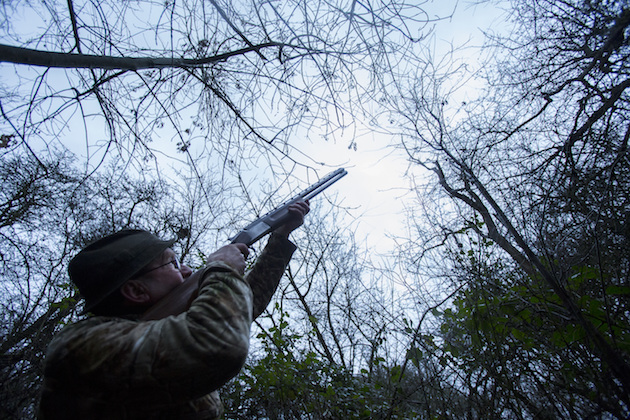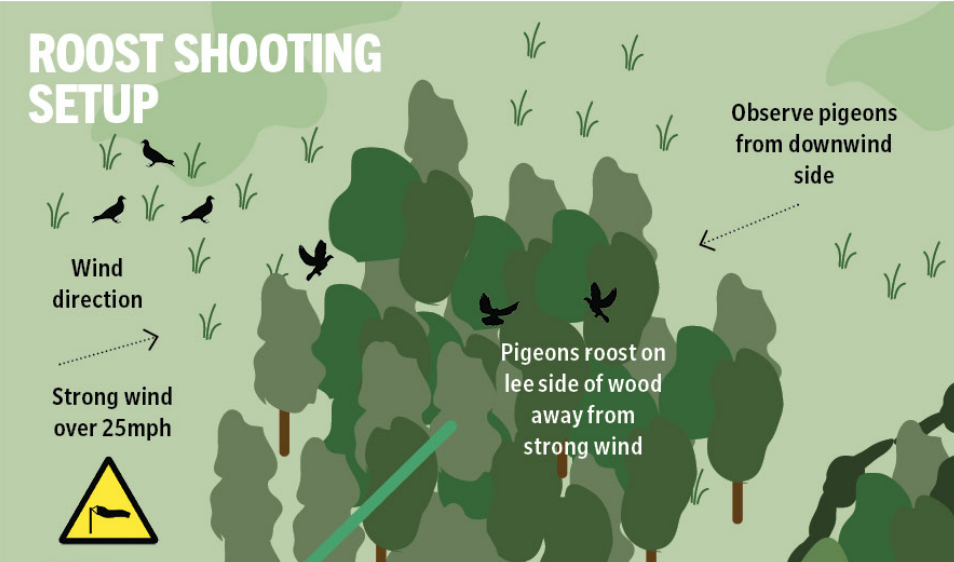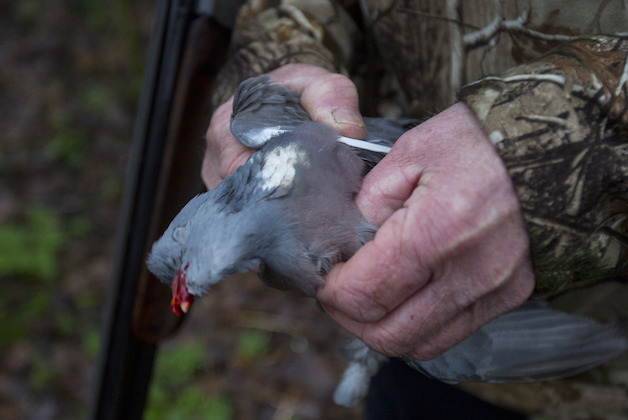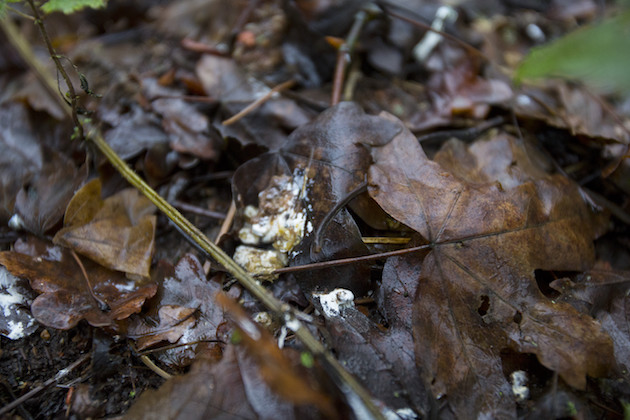Why do pigeons prefer spring grown rape?
I have noticed they invariably decoy much more easily – even when there are spring drillings in the vicinity. So…
Win CENS ProFlex DX5 earplugs worth £1,149 – enter here
<strong>Handy hints for successful roost shooting</strong>
 Flighting pigeon
Flighting pigeon
For the average pigeon shooter, the only time they get to have a go at roost shooting is on affairs organised by gamekeepers at the end of the season. And unless you are blessed by favourable weather on these occasions — that is to say a strong wind — you are likely to come away both disappointed and frustrated in equal measure.
Roost shooting pigeons as they return to their dormitories needs just as careful planning as a day’s decoying, something that is unlikely to happen if the date of the shoot has been decided weeks in advance. Add to the mix half a dozen other Guns whose main objective appears to be to boost the profits of cartridge manufacturers and you have reason to see why I am sceptical of killing many birds on these events.


Woodies often cram their crops at this time of year
I used to have permission to shoot a very good roosting wood, in February, after the end of the gameshooting season. I had the luxury of going when I pleased and only ever shot it when the wind blew. What made it exceptional was the fact that pigeons in the surrounding area loved to feed on frosted potatoes rather than the usual oilseed rape. This meant that farmers were quite happy to leave them alone, resulting in birds filling up at their leisure, often returning home at least two hours before dusk. On windy nights, they would approach the wood like driven grouse, in small parties of five or six birds. Carrying a food cargo of up to one-fifth of their bodyweight, they would return again and again, desperate to get in.
I have noticed they invariably decoy much more easily – even when there are spring drillings in the vicinity. So…
Pigeon shooting on spring drillings makes a big difference from shooting over winter crops. In the colder months you have…
It is unfortunate that the only time most pigeon shooters get access to the woods is when the days are shortest and the birds are feeding on rape, the least nutritious of all the various crops they eat. This means they spend the last hour of daylight filling their crops to bursting point before heading home as late as possible. By this time of year, their flocking instinct will be at its keenest, usually meaning that every bird coming to your wood will have spent the day on the same field, often exiting it in one go. In my own little wood, I tend to do better in October or November, when the birds are often spread all over the district clearing the last of the stubbles and drillings. They have longer daylight hours in which to feed and, because they are eating grains, do not have to eat the same bulk as rape, resulting in them coming and going over a much longer period.

Telltale droppings will show you the birds’ favoured trees
Let’s assume that by luck or hard work you have secured permission to shoot a wood. How will you know if pigeons are using it as a roost?
Get the latest news delivered direct to your door
Discover the ultimate companion for field sports enthusiasts with Shooting Times & Country Magazine, the UK’s leading weekly publication that has been at the forefront of shooting culture since 1882. Subscribers gain access to expert tips, comprehensive gear reviews, seasonal advice and a vibrant community of like-minded shooters.
Save on shop price when you subscribe with weekly issues featuring in-depth articles on gundog training, exclusive member offers and access to the digital back issue library. A Shooting Times & Country subscription is more than a magazine, don’t just read about the countryside; immerse yourself in its most authoritative and engaging publication.

